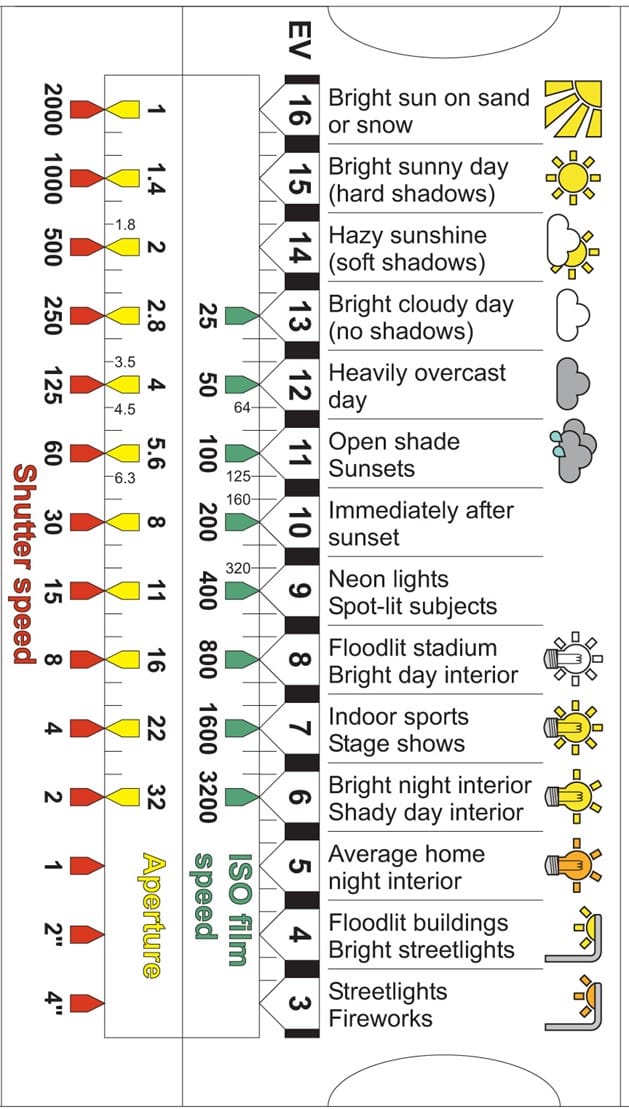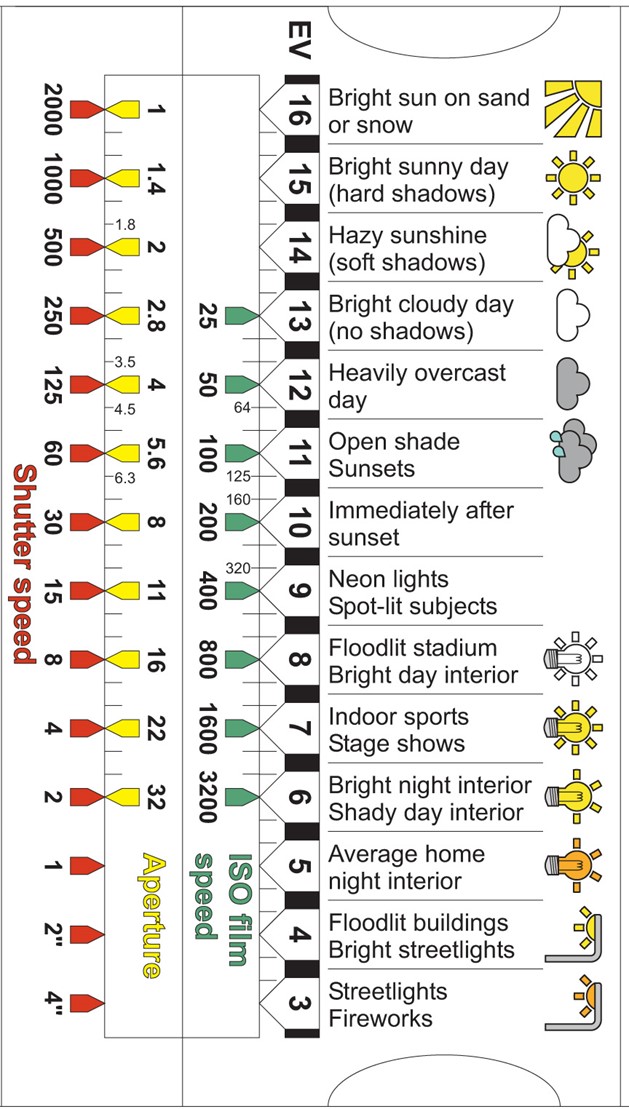A Brief History Of Metering
Chapter 2

Getting good exposures has always been a challenge and in the early days of photography people had all sorts of methods for estimating the exposure of a subject and matching it with the sensitivity of the film. I used to carry this handy sliding calculator (below) with an old 1930’s bellows camera I have. Indeed many camera manuals had similar guides to exposure.
You match the weather conditions on the right to the film speed (ISO) and then you are presented with combinations of aperture and shutter speed. Some guides like this published by camera and film makers would include seasonal and latitude as part of their attempts to get accurate estimates of exposure.

The reason for this is the eye is notoriously bad at estimating light intensity. The eye and brain constantly adapt to the conditions so it becomes very subjective. It is true that some photographers with years of experience have become adept at estimating lighting. It isn’t practical for most of us nor do I believe it is consistently accurate.
Other techniques included extinction ‘meters’ where you looked at the scene different neutral density filters until the highlights were just apparent. The number of the filter was used as gauge for setting the exposure. Some systems even had small pieces of photo paper that changed tone with exposure to light. It was only with the advent of the selenium and cadmium cells that one could reliably measure light electrically and convert this to accurate exposure values. Thus began the light meter industry.
Most of these light meters were a revolution for photographers and the meters could be seen swinging around their necks on lanyards.
(I refer to this type of reflected light meter as ‘average’ meters in the sense their wide angle of measurement means they average out the overall light from the scene it is aimed at. I do not mean the qualitative meaning of the word average. )
Next came the spot meter where optics allowed the meter to be pointed at specific parts of the scene to be photographed.
Enter Ansel Adams…



